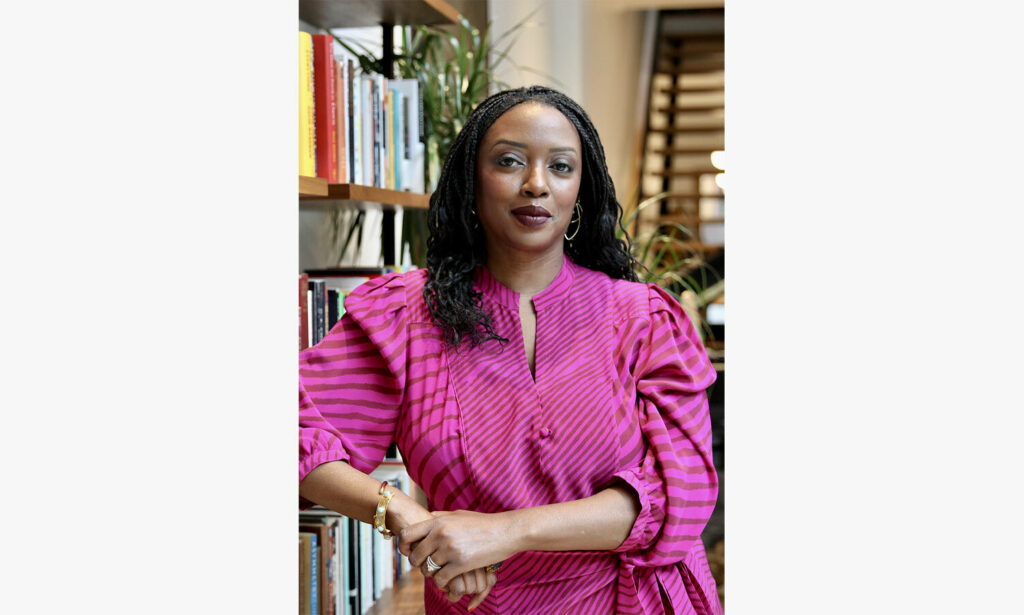We Are Not the Same, So Let’s Talk
“If we are the same, we cannot talk,
because there is nothing to say.
But if you and I are different,
there’s a lot to exchange.”
Architect and designer Gaetano Pesce

Executive Director Chiwoniso Kaitano. (Julie Bridgham photo)
In my first “Letter from the Director” after just a few months on the job, I mused about the challenge of remaining true to our legacy of caring for artists in a turbulent world. I wrote about MacDowell’s need to remain focused on the beauty and bounty of the future in order to continue to fulfill its mission to best support artists. Yet lately it’s become clear to me that a key to rising to that challenge is to avoid becoming indifferent to the world’s struggles on the way to that future. I believe this to be more important now than ever before as we seem to be at a crossroads.
The news – pick a subject – is so rife with examples of pain, cynicism, and the darkness of humanity that getting beyond this intersection might appear daunting, especially to our youth. Yet during periods of great turmoil it’s important to note that humans have, time and again, used art to try to interpret and understand and process the difficult times they have lived through – and the times about to be faced. We can use art to knit communities back together from vastly different walks of life. It is what MacDowell has always done.
We’ve made much of Edward MacDowell’s plan to combine different artistic disciplines under one roof at Columbia University’s new division of fine arts at the end of the 19th century, a philosophy that he transferred to Peterborough and the residency program that bears his name, but it seems especially instructive today. Thankfully for those of us who are interested in the arts – makers and lovers of the work alike – that celebration of differences in disciplines has expanded to include all nationalities, ethnicities, philosophies, genders, and abilities, resulting in a vast realm of creative thought and practice that is abundantly rich, beautiful, and inspiring. It is inspiring to those who watch a film, read a book, visit a museum, attend a performance, or walk through designed and built spaces great and small. It is inspiring to the artists who make that work when they speak with other artists who offer differing perspectives.
Artists know how valuable the exchange of ideas affirmed in the Gaetano Pesce quote above can be. They have always known it, and have always done it. They have shown us new ways of considering our world, demonstrated new paths to finding joy in both the mundane and the complicated, and presented new perspectives about how we think and feel about the world. We ought to continue to look to them for the light in the darkness, and to recognize the reflections of our own humanity. If we look to our artists for examples of experimentation, inquiry, and finding beauty in their work, we’ll discover new ways of pushing through that clogged intersection of destructive discord to find, if not harmony, then at least a productive way forward.
Never accept hate and fear as normal. Keep finding the beauty in people, in new ideas, in the art you seek out. Share that inspiring work of art as far and wide as you can. While in many ways we are the same, it is a fact that we are not the same, and that is brilliant. Let’s just make sure we talk.
In friendship,
Chiwoniso Kaitano
Executive Director
This letter opens the 2023 summer-fall newsletter, found here.
